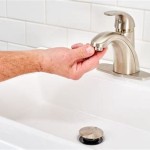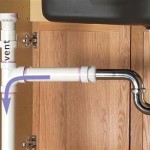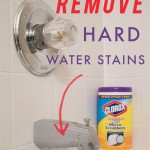How to Reglaze Bathroom Tiles
Bathroom tiles, over time, can lose their shine and become dull, discolored, or even chipped. Instead of replacing them entirely, consider reglossing them. Reglazing is a cost-effective way to refresh the look of your bathroom tiles and restore their luster. This process involves applying a new layer of enamel to the existing tile surface, creating a smooth, polished finish. While it may seem like a daunting task, reglazing can be done with proper tools and a little bit of patience. Here is a comprehensive guide on how to reglaze bathroom tiles.
Preparing the Tiles
Before you begin reglazing, you need to thoroughly prepare the tiles for the process. This involves cleaning, sanding, and patching any imperfections.
1. Clean the Tiles: Start by cleaning the tiles with a heavy-duty tile cleaner to remove grease, dirt, and soap residue. Pay attention to the grout lines, as they can accumulate grime and affect the adhesion of the glaze. Use a scrub brush and warm water to clean the grout, and allow the tiles to dry completely.
2. Sand the Tiles: Once the tiles are clean and dry, you need to sand them to create a rough surface for the glaze to adhere to. Use a medium-grit sandpaper (around 100-120 grit) and carefully sand the entire surface of each tile, including the grout lines. Be sure to wear a dust mask and goggles to protect your eyes and respiratory system.
3. Patch Imperfections: If there are any cracks, chips, or holes in the tiles, you need to patch them before reglazing. You can use a tile repair kit or a two-part epoxy putty. Apply the patching material according to the manufacturer's instructions, allow it to cure, and then sand it smooth with fine-grit sandpaper.
Applying the Glaze
After preparing the tiles, you can start applying the glaze. This involves selecting the right type of glaze, applying it evenly, and allowing it to dry properly.
1. Choose the Glaze: There are various types of glazes available, each with its own pros and cons. Some popular options include oil-based, water-based, and epoxy-based glazes. Oil-based glazes are durable and provide a high-gloss finish but have a strong odor and can take a long time to dry. Water-based glazes are less harsh and dry faster, but may not offer the same durability as oil-based glazes. Epoxy-based glazes are extremely durable and resistant to stains and chemicals, but require special application techniques.
2. Apply the Glaze: Once you have chosen the glaze, you need to apply it to the tiles. It's advisable to wear gloves and a respirator mask as glaze can be harmful if inhaled. Use a paintbrush or a roller to apply the glaze evenly to the tiles, covering all the surfaces. Avoid getting the glaze on the grout lines as it can create a messy finish.
3. Allow the Glaze to Dry: After applying the glaze, allow it to dry according to the manufacturer's instructions. This usually takes anywhere from 24 to 48 hours. Ensure the area is well-ventilated during the drying process. Once the glaze has dried, you can apply a second coat for added durability and a smoother finish.
Final Touches
After the glaze has dried, you can give your bathroom tiles a final touch to make them look their best. This involves cleaning up any excess glaze, sealing the grout lines, and applying a sealant to the tiles.
1. Clean Up Excess Glaze: After the glaze has dried, use a damp cloth to wipe away any excess glaze that has spilled onto the grout lines. Avoid using abrasive cleaners or solvents that can damage the glaze.
2. Seal the Grout Lines: After cleaning the tiles, you need to seal the grout lines to prevent water, stains, and mold. Use a grout sealant specifically designed for bathroom tiles and apply it according to the manufacturer's instructions. Allow the sealant to dry completely before using the bathroom.
3. Seal the Tiles: For added protection, you can apply a tile sealant to the entire surface of the tiles. This will create a protective barrier against water, stains, and discoloration. Choose a sealant that is compatible with your glaze and apply it according to the manufacturer's instructions.
Reglazing bathroom tiles is a cost-effective way to rejuvenate your bathroom and give it a fresh look. By following this guide, you can successfully reglaze your tiles and enjoy a beautiful and functional bathroom for years to come. Remember to always wear protective gear, follow the manufacturer's instructions, and work in a well-ventilated area.

Reglazing Tile Is The Most Transformative Fix For A Dated Bathroom Architectural Digest

How To Reglaze A Bathtub And Tile Surround Daly Digs

Before After A Perfectionist S 1 000 Bathroom Overhaul In Brooklyn Remodelista

Is Ceramic Tile Refinishing Worth It

Bathtub Reglazing Bathroom Tile Wall Serving Queens Nyc Brooklyn Tri Star Corp

At This House We Reglazed The Bathrooms Wall Tile And Bathtub White Also Color Sealed F Bathroom Remodel Tiles

The Cabindo Diy Tub And Tile Reglazing Bathroom Renovation Cost

Porcelain Bathtub Repair Tile Reglazing

Bathtub Ceramic Refinishing Bath Innovations Of Alabama

Bathroom Refinishing Services Nyc Supreme Bath
Related Posts







